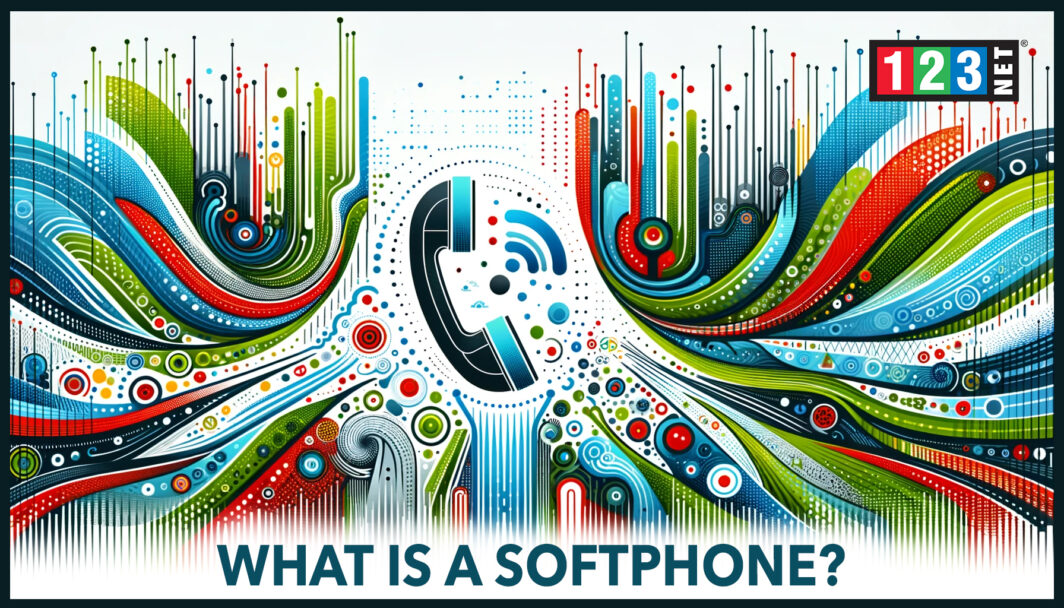
Introduction to Softphones
Softphones mark a revolutionary shift in telecommunications, steering away from the traditional, hardware-dependent systems to a more modern, software-based approach. These applications enable voice and video calls over the internet using computers or mobile devices. This shift has its roots in the early developments of internet telephony and has rapidly advanced due to progress in digital communication and Voice over Internet Protocol (VoIP) technology.
The journey of softphones began as an attempt to bypass the limitations and costs associated with traditional telephony. Early internet telephony was rudimentary, offering voice communication over the internet with limited quality. However, with the advent of broadband internet and advancements in audio and video compression technologies, softphones have evolved dramatically. Today, they offer high-definition voice and video communication capabilities, rivaling, and in some cases surpassing, the quality of traditional telephony.
This evolution of softphones closely aligns with the growing trend of digital transformation across various sectors. As businesses and individuals increasingly seek flexible, cost-effective, and integrated communication solutions, softphones have become a key player. They offer not just the basic functionality of making and receiving calls, but also a range of features that meet the needs of modern, digitally connected users. This significantly impacts the traditional telecom industry, challenging its norms and opening up new avenues for communication, collaboration, and connectivity.
How they Work
Softphones convert analog voice signals into digital data packets and transmit them over the internet. This functionality is possible due to their integration with VoIP technology, which uses protocols like SIP (Session Initiation Protocol) to initiate, maintain, and conclude real-time communication. This integration provides a versatile array of communication options, extending beyond traditional voice calls to include features like video conferencing and instant messaging.
The process begins when a user dials a number or selects a contact. The softphone application then uses SIP to send a request to the other party’s device, establishing a connection. Once the connection is established, the softphone converts the user’s voice into digital data packets. This is then sent across the internet to the recipient. The recipient’s softphone application then converts these data packets back into sound, enabling a two-way communication.
This technology represents a significant leap from traditional telephony. By using the internet as the transmission medium, softphones eliminate the need for dedicated phone lines and hardware, reducing costs and increasing accessibility. They also offer greater flexibility and mobility, as users can make and receive calls from anywhere with an internet connection. This is particularly beneficial in a world where remote work and global connectivity are becoming the norm.
Key Features
Designers have made softphone user interfaces intuitive and user-friendly, often resembling traditional phones’ layout but with advanced features. Key functionalities include caller ID, which allows users to see the identity of incoming callers; call forwarding, to redirect calls to another number; voicemail, enabling callers to leave messages; and conference calling, which facilitates group discussions over the phone.
In addition to these traditional features, modern softphones have expanded their capabilities to incorporate video calls and instant messaging. This makes them not just a tool for voice communication but a comprehensive platform for various forms of digital interaction. Video calls have become particularly important in the business context, enabling virtual meetings and face-to-face conversations regardless of participants’ geographical locations. Instant messaging provides a quick and efficient way to exchange information without the need for a full-fledged phone call.
Moreover, many softphones are now integrated with other business tools and applications, enhancing productivity and streamlining workflows. Features like click-to-call, allows users to dial numbers directly from emails or websites. Where as, CRM integration, enables easy access to customer data during calls, are becoming standard in many softphone applications. These features illustrate the versatility and adaptability of softphones, making them an essential tool for communication in the digital age.
Key Benefits
Offers significant cost savings over traditional phone systems, particularly in reducing long-distance and international call charges. They provide unparalleled flexibility and mobility, allowing users to make and receive calls from anywhere with an internet connection. For businesses, softphones are highly scalable, easily adjusting to changing needs without the requirement for additional physical infrastructure.

Softphone vs. Traditional Phone
Comparing softphones to traditional phones reveals a clear distinction in terms of features and functionality. Softphones, thanks to their software-based nature, offer advanced capabilities such as video calling, file sharing, and seamless integration with a wide array of digital tools and platforms. This makes them particularly suited for today’s interconnected, internet-driven environment. The ability to conduct video conferences, share files during calls, and integrate with CRM systems or email platforms, for instance, enhances productivity and streamlines communication processes in both personal and business contexts.
On the other hand, users have long appreciated traditional phones for their hardware-centric design, reliability, and simplicity. The tactile feel of a physical phone and its straightforward operation, requiring minimal technical know-how, offer comfort to many users. Often, traditional phones are considered more stable in terms of connectivity, relying less on internet bandwidth and raising fewer concerns about software crashes or glitches.
However, each type has its own set of advantages and disadvantages. Softphones offer greater flexibility, mobility, and a suite of modern features, but they depend heavily on internet connectivity and can be complex for those less tech-savvy. Traditional phones, though simpler and potentially more reliable, lack the advanced features and integrations demanded by modern communication and may incur higher long-term costs due to hardware and maintenance expenses. The choice between a softphone and a traditional phone largely depends on the specific needs, preferences, and technological comfort of the user.
Setting Up
Setting up a softphone is a straightforward process, involving a few essential steps. The first step is choosing a suitable service provider that aligns with your communication needs and budget. Once a provider is selected, the next step is to download and install the softphone software on the desired device, be it a computer, smartphone, or tablet.
Configuring the softphone application is the next critical step. This typically involves entering SIP (Session Initiation Protocol) account details provided by the service provider. Users can then customize settings to suit their preferences, such as adjusting audio and video quality, setting up voicemail, and configuring caller ID options. Many softphone applications also offer advanced customization features, like setting up call forwarding rules, integrating with other applications, or customizing the interface.
The ease of installation and minimal hardware requirements make softphones an attractive option for many. Unlike traditional phone systems that often require specialized hardware and extensive wiring, softphones can be set up quickly with just a device and an internet connection. This simplicity and cost-effectiveness are particularly appealing to small businesses and individual users who may not have the resources for a complex phone system.
Security & Privacy Considerations
Security and privacy are critical aspects of using softphones, given that they operate over the internet and handle sensitive communication data. To safeguard this data, most softphone applications employ robust security measures like end-to-end encryption. This secure encryption of voice and video calls, messages, and file transfers makes it extremely difficult for unauthorized parties to intercept or access the communication.
In addition to encryption, secure login mechanisms are standard in softphones, often involving strong password protocols or even multi-factor authentication. Both to prevent unauthorized access to the accounts. Regular software updates are crucial for maintaining security because they often include patches for vulnerabilities that cyber attackers could exploit.
Users play a significant role in maintaining security and privacy while using softphones. Adhering to best practices is essential, which includes using strong, unique passwords, being cautious about network security (especially when using public Wi-Fi), and regularly updating the software to ensure all security features are up-to-date. Users should also understand the security standards and privacy policies of their chosen softphone provider to ensure responsible and secure handling of their communication data.
The Future of Softphones
The future of softphones looks bright and promising, driven by ongoing advancements in VoIP technology and digital communication. One of the most exciting trends is the integration of artificial intelligence (AI) into softphone systems. AI has the potential to revolutionize call management, offering features like automated call routing, voice recognition for command inputs, and even predictive analytics for customer interactions in a business setting.
Enhanced security features are also a critical aspect of the future development of softphones. As cyber threats evolve, so too must the security measures of communication tools. We can expect to see advanced encryption techniques, more robust authentication methods, and sophisticated monitoring tools to detect and prevent security breaches.
Another significant trend is the continued and deeper integration of softphones with other business tools and platforms. This integration creates a more unified and efficient communication ecosystem, where softphones can seamlessly interact with CRM systems. Including emailing clients, project management tools, and more. This will not only enhance the functionality of softphones but also streamline various business processes, improving productivity and user experience.
FAQ
- What is the difference between a softphone and a VoIP phone? A: A softphone is a software-based phone, while a VoIP phone can be either software-based or hardware-based but both use VoIP technology for calls.
- Can softphones be used for international calls? A: Yes, it can make international calls, often at a lower cost compared to traditional phone systems.
- How do softphones impact business communication? A: It enhances business communication by providing flexible, cost-effective, and scalable solutions, integrating with various digital tools to streamline communication processes.




